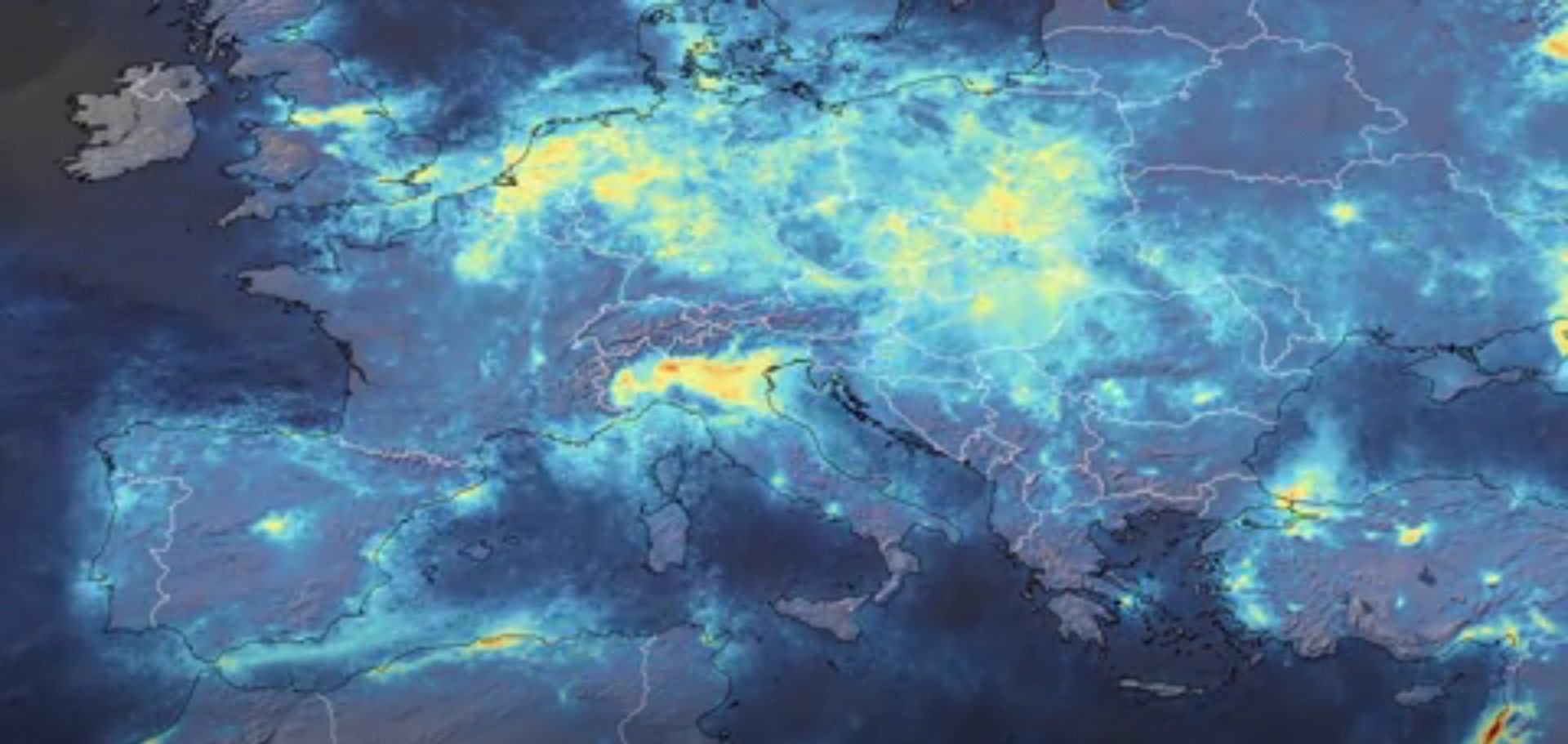Italy's coronavirus response dramatically reduces air pollution emissions, satellites show
As the world scrambles to confront the disease caused by a novel coronavirus, Italy has been forced to take such dramatic measures that the country's emissions have changed, as seen from space.
That's on display in a new video produced by the European Space Agency (ESA) using data gathered by the agency's Copernicus Sentinel-5P satellite. That spacecraft tracks air pollution in the atmosphere, and the satellite has seen a sharp decrease in emissions of nitrogen dioxide over Italy during the first two and a half months of 2020. The Italian prime minister ordered northern Italy into a lockdown on Sunday (March 8) to try to contain the disease, known as COVID-19.
"Although there could be slight variations in the data due to cloud cover and changing weather, we are very confident that the reduction in emissions that we can see coincides with the lockdown in Italy causing less traffic and industrial activities," Claus Zehner, the mission's manager at ESA, said in a statement.
Related: How would NASA handle an astronaut disease outbreak?
More: Satellite images show Iran's mass graves for coronavirus victims

Italy has seen the greatest number of confirmed cases of COVID-19 of any country except China, where the outbreak, which is now classified as a pandemic, began. Cases were particularly prevalent in northern Italy, hence the prime minister's regulations closing public spaces there. Since then, he has extended the measures throughout the country.
As people stayed home more and more, nitrogen dioxide emissions in Italy, particularly the country's northern region, fell. Copernicus Sentinel-5P measures levels of this compound, along with ozone, sulfur dioxide, carbon monoxide and methane, among other substances. All of these gases can affect human health and the climate, which is why the ESA monitors them.
But right now, the spread of COVID-19 is a much more pressing concern, and the reduction in emissions suggests that people are taking steps to reduce their own exposure and that of their neighbors.
Get the Space.com Newsletter
Breaking space news, the latest updates on rocket launches, skywatching events and more!
- Dramatic effect of coronavirus lockdowns seen from space
- NASA center in California issues mandatory work-from-home order after employee tests positive for coronavirus
- Space Symposium 2020 postponed indefinitely due to coronavirus pandemic
Email Meghan Bartels at mbartels@space.com or follow her @meghanbartels. Follow us on Twitter @Spacedotcom and on Facebook.
OFFER: Save at least 56% with our latest magazine deal!
All About Space magazine takes you on an awe-inspiring journey through our solar system and beyond, from the amazing technology and spacecraft that enables humanity to venture into orbit, to the complexities of space science.
Join our Space Forums to keep talking space on the latest missions, night sky and more! And if you have a news tip, correction or comment, let us know at: community@space.com.

Meghan is a senior writer at Space.com and has more than five years' experience as a science journalist based in New York City. She joined Space.com in July 2018, with previous writing published in outlets including Newsweek and Audubon. Meghan earned an MA in science journalism from New York University and a BA in classics from Georgetown University, and in her free time she enjoys reading and visiting museums. Follow her on Twitter at @meghanbartels.










